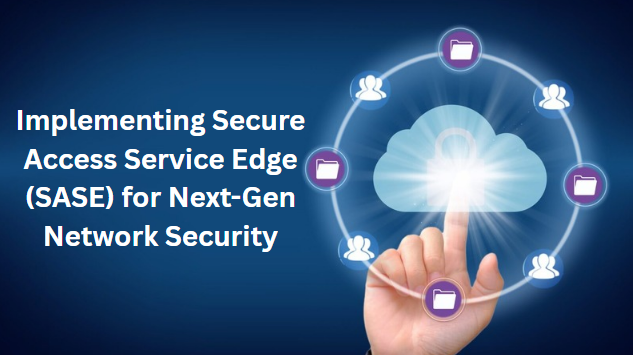
As organizations accelerate their digital transformation journeys, the need for a modern approach to network security becomes critical. Traditional perimeter-based security models no longer suffice in an era dominated by cloud computing, remote workforces, and decentralized applications. This has led to the rise of Secure Access Service Edge (SASE) — a cloud-native framework that converges networking and security into a unified service. SASE empowers enterprises to enforce secure, reliable access to resources, no matter where users or applications reside.
Understanding SASE: A New Network Security Paradigm –
SASE, pronounced “sassy,” is a term introduced by Gartner that blends network and security functions into a single, cloud-delivered model. At its core, SASE combines software-defined wide area networking (SD-WAN) with security capabilities such as secure web gateways (SWG), cloud access security brokers (CASB), zero trust network access (ZTNA), and firewall-as-a-service (FWaaS). Rather than focusing on securing a fixed perimeter, SASE applies identity-driven and context-aware policies that follow users and devices wherever they go.
Why Legacy Security Models Are No Longer Enough –
Traditional security architectures were built for centralized offices and data centers, not the distributed, mobile-first environments that define today’s IT landscape. The proliferation of remote users, cloud applications, and edge devices introduces complexities and vulnerabilities that static firewalls and VPNs struggle to address. As a result, enterprises face increased exposure to data breaches, performance degradation, and inconsistent policy enforcement. These limitations underscore the need for a more dynamic and integrated security approach — one that SASE is designed to deliver.
Core Components of a SASE Architecture –
A robust SASE architecture consists of several key elements. SD-WAN provides flexible, high-performance connectivity across multiple locations and cloud platforms. Secure Web Gateway (SWG) protects users from web-based threats, while CASB ensures visibility and control over cloud applications. ZTNA replaces traditional VPNs by granting access based on user identity and context, and FWaaS offers scalable firewall protections from the cloud. Together, these components create a security perimeter that is defined by user identity, not physical location.
Benefits of SASE for Modern Enterprises –
One of the primary advantages of SASE is enhanced security through zero trust principles, ensuring that access is tightly controlled and threats are mitigated in real-time. Its cloud-native design provides exceptional scalability and cost-efficiency, eliminating the need for hardware-heavy infrastructure. Additionally, SASE improves network performance by routing traffic through optimal paths and reducing latency. Organizations also benefit from unified policy management, allowing consistent enforcement across all users and endpoints.
Steps to Successfully Implement SASE –
Implementing SASE begins with a comprehensive assessment of your current infrastructure, identifying pain points and areas for improvement. Next, develop a cloud-first strategy by migrating legacy applications and embracing cloud-delivered services. Choosing the right SASE vendor is crucial—look for providers offering global reach, integrated features, and robust support. Adopting a zero trust model is essential for enforcing identity-based access. Finally, automation and continuous monitoring are critical to ensure optimal performance and threat detection as your network evolves.
Challenges in SASE Adoption –
Despite its advantages, transitioning to a SASE model is not without challenges. Organizations may face disruption during migration, particularly if existing systems are deeply entrenched. There’s also the risk of vendor lock-in, which can limit flexibility and future adaptability. Moreover, many IT teams may encounter skill gaps, requiring training or the recruitment of new talent to effectively manage the new architecture. Planning, stakeholder alignment, and phased implementation are key to overcoming these obstacles.
Conclusion –
SASE represents a transformational shift in how network and security services are delivered. By consolidating multiple functions into a unified, cloud-native architecture, SASE enables organizations to meet the demands of a distributed digital workforce while maintaining high standards of security and performance. As enterprises continue to embrace cloud technologies and remote work, implementing SASE is not just a strategic advantage—it’s a necessity for staying secure and agile in the next generation of network environments.

